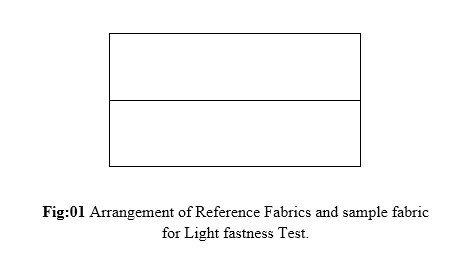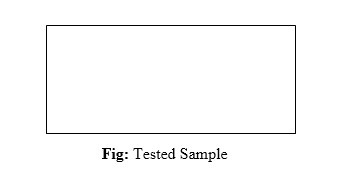Determination of Light Fastness to Water of a Dyed Sample
Determination of Light Fastness to Water of a Dyed Sample
Introduction:
Light fastness: Light fastness is the resistance to fading of dyed textiles when exposed to daylight. Exposure to sunlight is a est fo the behaviour of the sample under actual conditions of use but takes long time
ISO recommended that,
The sample should be tested together with standard dyed wool controls of light fastness 1-8 respectively.
Light fastness grades:
| Grade | Degree of fading | Light fastness type |
| Grade-8 | No fading | Out standing |
| Grade-7 | Very slight fading | Excellent |
| Grade-6 | Slight fading | Very good |
| Grade-5 | Moderate fading | Good |
| Grade-4 | Appreciable fading | Moderate |
| Grade-3 | Significant fading | Fair |
| Grade-2 | Extensive fading | Poor |
| Grade-1 | Very extensive fading | Very poor |
Procedure:
In standard condition-
The sample and standards are mounted half covered and half exposed to daylight. The sample must be protected from rain by a glass sheet not less than 5cm away (well ventilation due to moisture and heat). The specimen and standards should be kept under sun and continue 24hrs until sufficient fading.
8 Reference sample and the tested sample are cut at same size and those are accommodated on the template.
- The specimens are mounted in a frame facing south in northern hemisphere and facing north in southern hemisphere at an angel equal to the latitude of the place.
- The way of carrying out the test is to mount the standards and specimens as fig:01
- The sample must be protected form rain by glass sheet.
- One quarter of the sample and standards are covered with opaque fabric. Thus it is exposed until standard-1 will be fade and equivalent to standard-4 on change in color grey scale.
- Then cover up one quarter of previously exposed portion of the sample and standards by a another opaque sheet. Thus it is exposed until standard-7 will be fade and equivalent to standard-4 on change in color grey scale.
- Result will be terminated and opaque will be taken out, three stripes will be found in specimen and standards.

- The zones of specimen are compared with zones of standards. The light fastness of a dyed sample is the number of the wool standard that has faded to same extent as the exposed area of the sample.
- If the two degrees of fading on the specimen do not would be the mean between the two.
Video on Color fastness to Light :
Sample:

Result:
| Colour Fastness to Light | ||
| Rating | Degree of Fading | Light Fastness |
| 7-8 | excellent | Good |
Conclusion:
The determination of fastness properties are based on visual examination, thus result can vary person to person.
(54)